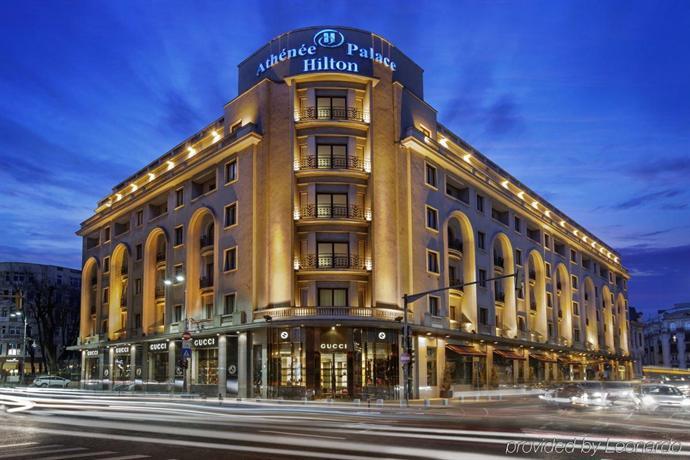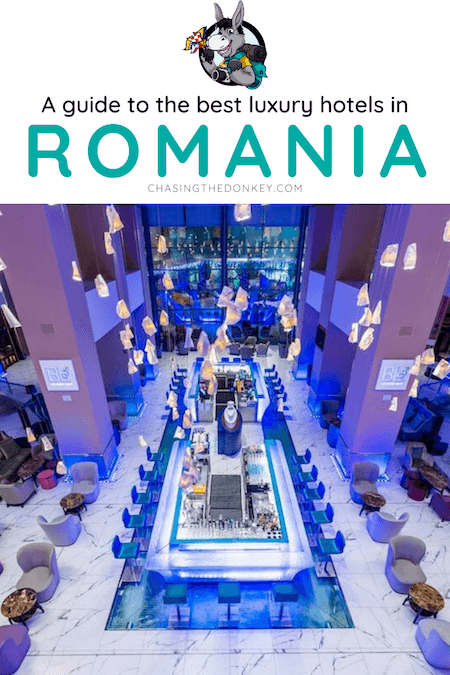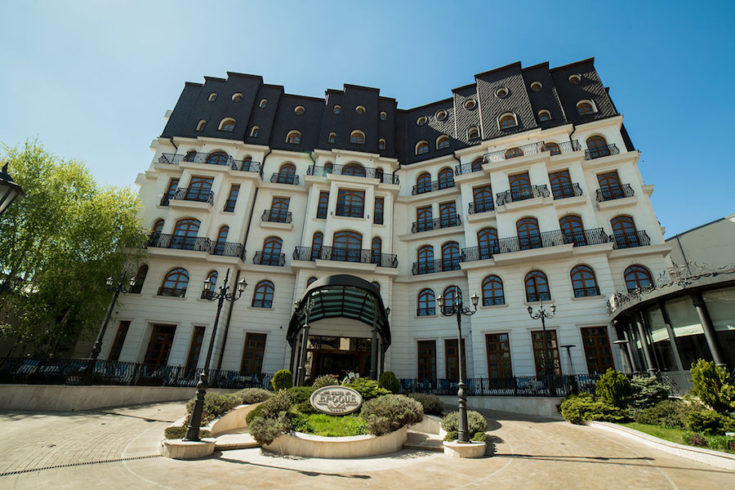
Romania, a land steeped in captivating history, breathtaking natural beauty, and a vibrant cultural tapestry, beckons travelers with an irresistible charm. From the mystical allure of the Carpathian Mountains to the sun-drenched Black Sea coast, and the architectural grandeur of its cities, Romania offers a diverse and enriching travel experience. To truly immerse oneself in this enchanting destination, choosing the right accommodation is paramount. This article delves into the best hotels Romania has to offer, alongside a comprehensive guide to its top attractions, rich history, practical travel tips, diverse accommodation options, seamless transportation, and the ideal times to embark on your Romanian adventure.
A Tapestry of History: Romania’s Enduring Legacy
Romania’s history is a complex and compelling narrative, shaped by Dacian tribes, Roman conquest, medieval principalities, Ottoman influence, and the tumultuous 20th century. The legacy of this past is etched into its landscapes, evident in ancient ruins, imposing castles, and charming fortified churches.

Related Articles about Romania’s Regal Retreats: Unveiling the Nation’s Finest Hotels and Unforgettable Experiences:
- Switzerland: A Symphony of Alpine Majesty and Timeless Charm
- Hanoi: A Journey Through Time and Taste
- Ascend to the Clouds: An Unforgettable Journey Through Machu Picchu
- Unveiling the Magic: A Comprehensive Guide to Edinburgh, Scotland
- Romania: A Tapestry of Legends, Landscapes, and Unforgettable Experiences
- Ancient Roots: The Dacians, an Indo-European people, inhabited the region for centuries before being conquered by the Roman Empire in the 2nd century AD. Their rich culture and advanced civilization are still hinted at in archaeological sites like Sarmizegetusa Regia.
- Medieval Powerhouses: The emergence of independent principalities like Wallachia, Moldavia, and Transylvania in the Middle Ages saw the construction of formidable fortresses and monasteries, many of which stand today as UNESCO World Heritage sites.
- Ottoman and Habsburg Influence: For centuries, Romania was a battleground and a frontier, experiencing periods of Ottoman suzerainty and Habsburg influence, which left indelible marks on its architecture, cuisine, and traditions.
- The Birth of Modern Romania: The unification of Wallachia and Moldavia in 1859 marked a pivotal moment, leading to the establishment of the Kingdom of Romania in 1881.
- The 20th Century and Beyond: Romania endured two World Wars, a period of communist rule, and a dramatic revolution in 1989. Today, it is a democratic republic and a member of the European Union, embracing its past while forging a dynamic future.
Beyond the Ordinary: Romania’s Top Attractions
Romania’s allure lies in its diverse array of attractions, catering to every traveler’s whim:

- The Enchanting Castles: No visit to Romania is complete without exploring its legendary castles. Bran Castle, famously associated with Bram Stoker’s Dracula, is a must-see for its dramatic hilltop setting and Gothic architecture. Peleș Castle in Sinaia, a former royal residence, is a masterpiece of German Renaissance architecture, boasting opulent interiors and stunning mountain views. Corvin Castle in Hunedoara, a magnificent Gothic-Renaissance fortress, transports visitors back to medieval times with its imposing towers and drawbridge.
- The Mystical Carpathians: This vast mountain range offers unparalleled opportunities for hiking, skiing, and exploring picturesque villages. The Bucegi Mountains are easily accessible from Bucharest and offer dramatic peaks and ancient geological formations. The Făgăraș Mountains are home to the Transfăgărășan Highway, a serpentine road renowned for its breathtaking vistas, and the stunning Bâlea Lake.
- Bucharest: The "Little Paris" of the East: Romania’s vibrant capital city pulsates with energy. Explore the grandeur of the Palace of the Parliament, one of the largest administrative buildings in the world. Wander through the charming Old Town (Centrul Vechi), with its cobblestone streets, lively cafes, and historic churches. Discover the fascinating exhibits at the National Museum of Art of Romania and the Village Museum (Muzeul Național al Satului "Dimitrie Gusti"), an open-air museum showcasing traditional Romanian village life.
- Transylvania’s Medieval Charm: Beyond the castles, Transylvania boasts a collection of well-preserved medieval towns. Sighișoara, a UNESCO World Heritage site, is a perfectly preserved citadel where Vlad the Impaler was born. Brașov, nestled at the foot of Mount Tâmpa, offers a picturesque Old Town with the Black Church as its centerpiece. Sibiu, a former European Capital of Culture, captivates with its charming squares, colorful houses, and rich artistic heritage.
- The Painted Monasteries of Bucovina: In the northeastern region of Bucovina, a UNESCO World Heritage site, you’ll find a collection of Orthodox monasteries adorned with vibrant exterior frescoes depicting biblical scenes. Voroneț Monastery, known as the "Sistine Chapel of the East," is particularly famous for its vivid "Voroneț Blue."
- The Danube Delta: This vast wetland, a UNESCO World Heritage site, is a paradise for birdwatchers and nature lovers. Explore its labyrinthine waterways by boat and witness an incredible diversity of avian life, as well as unique flora and fauna.
- The Black Sea Coast: For a coastal escape, the Romanian Riviera offers sandy beaches, lively resorts like Mamaia and Vama Veche, and the historic port city of Constanța, home to ancient Roman ruins.
Navigating Romania: Travel Tips for a Seamless Journey
To make your Romanian sojourn as enjoyable as possible, keep these practical tips in mind:
- Language: Romanian is the official language, a Romance language. While many younger Romanians, especially in tourist areas, speak English, learning a few basic Romanian phrases like "Bună ziua" (Good day), "Mulțumesc" (Thank you), and "Scuzați-mă" (Excuse me) will be greatly appreciated.
- Currency: The official currency is the Romanian Leu (RON). Credit cards are widely accepted in cities and larger establishments, but it’s advisable to carry some cash for smaller shops, rural areas, and market purchases.
- Visas: Depending on your nationality, you may require a visa to enter Romania. Check the latest visa regulations with the Romanian embassy or consulate in your country. Romania is part of the European Union, and for EU citizens, a national ID card is sufficient.
- Safety: Romania is generally a safe country for tourists. However, like any destination, it’s wise to be aware of your surroundings, especially in crowded areas, and to take precautions against petty theft.
- Tipping: Tipping is customary in Romania. In restaurants, a 10-15% tip is appreciated for good service. For taxi drivers, rounding up the fare is common.
- Power Adapters: Romania uses Type F electrical sockets (two round pins). The standard voltage is 230V.
Accommodation Options: From Regal to Rustic
Romania offers a diverse range of accommodation to suit every budget and preference, with a growing number of world-class hotels providing exceptional service and comfort.
The Best Hotels in Romania:
While Romania boasts a burgeoning hotel scene, here are some of the most highly regarded and luxurious options, often blending historical charm with modern amenities:
- The Athenee Palace Hilton Bucharest (Bucharest): A true icon of Bucharest, this historic hotel exudes old-world elegance. Its opulent interiors, prime location on Calea Victoriei, and impeccable service make it a top choice for discerning travelers. Expect lavish rooms, fine dining, and a sense of stepping back in time.
- Radisson Blu Hotel, Bucharest (Bucharest): Located in the heart of the city, this contemporary hotel offers stylish rooms, excellent amenities including a spa and indoor pool, and a vibrant atmosphere. It’s a reliable choice for both business and leisure travelers seeking comfort and convenience.
- InterContinental Athenaeum Palace Bucharest (Bucharest): Another grand dame of Bucharest, the InterContinental offers stunning views of the Athenaeum and the city. Its spacious rooms, excellent dining options, and central location make it a sophisticated choice.
- Grand Hotel Continental (Bucharest): Steeped in history, this elegant hotel offers a classic European experience. Its beautifully decorated rooms, refined atmosphere, and central location near the National Museum of Art are highlights.
- Kronwell Hotel (Brașov): Situated in the charming city of Brașov, Kronwell offers a modern and stylish escape. Its well-appointed rooms, excellent spa facilities, and proximity to the Old Town make it a popular choice for exploring Transylvania.
- Mercure Brașov Center (Brașov): For a comfortable and contemporary stay in Brașov, Mercure provides well-designed rooms and convenient access to the city’s attractions.
- The House with the Griffin (Sighișoara): For an truly immersive historical experience, consider staying in a guesthouse within the Sighișoara Citadel. The House with the Griffin offers a charming and authentic stay within the medieval walls.
- Casa Wagner (Sighișoara): Another excellent option within Sighișoara’s citadel, Casa Wagner provides a comfortable and characterful base for exploring this UNESCO World Heritage site.
- Plaisir de Roumanie (Rural Transylvania): For a taste of authentic rural luxury, look for charming boutique guesthouses and agriturismo experiences scattered throughout Transylvania. These often offer a unique blend of traditional architecture, personalized service, and delicious local cuisine. While specific names can vary, seeking out highly-rated rural retreats will provide an unforgettable experience.
Other Accommodation Options:
Beyond the top-tier hotels, Romania offers a wealth of other accommodation choices:
- Boutique Hotels: Many cities and towns boast charming boutique hotels that offer a more intimate and personalized experience, often housed in beautifully restored historic buildings.
- Guesthouses (Pensiuni): These are incredibly popular throughout Romania, especially in rural areas and tourist hotspots. They range from simple and rustic to more luxurious, offering a chance to experience local hospitality and home-cooked meals.
- Apartments and Vacation Rentals: For longer stays or families, renting an apartment can be a cost-effective and convenient option.
- Hostels: Budget travelers will find a good selection of hostels in major cities, offering a social atmosphere and affordable beds.
Getting Around: Transportation in Romania
Romania offers a decent transportation network, making it relatively easy to navigate the country:
- By Air: Henri Coandă International Airport (OTP) in Bucharest is the main international gateway. Other major cities like Cluj-Napoca, Timișoara, and Iași also have international airports. Internal flights are available but often less convenient than trains for shorter distances.
- By Train: The Romanian Railway Company (CFR Călători) operates an extensive network connecting major cities and towns. Trains can be a scenic and relatively affordable way to travel, especially for longer distances. Booking in advance is recommended, particularly for high-speed or overnight trains.
- By Bus: Intercity buses are a common and often more frequent option than trains for certain routes. Companies like AutoBona and others offer services between cities.
- By Car: Renting a car provides the most flexibility, especially for exploring rural areas and the Carpathian Mountains at your own pace. Roads in Romania have improved significantly, but some rural roads can be narrow and winding. Be prepared for varying road conditions and adhere to speed limits.
- Within Cities: Major cities have public transportation systems including buses, trams, and metros (in Bucharest). Taxis are readily available, but it’s advisable to use reputable companies or ride-sharing apps to avoid potential overcharging.
The Perfect Time to Visit: Embracing Romania’s Seasons
Romania experiences four distinct seasons, each offering a unique charm:
- Spring (April-May): This is a beautiful time to visit as nature awakens. Wildflowers bloom, the weather is mild, and the crowds are smaller than in peak summer. It’s ideal for exploring cities, hiking in the lower altitudes, and enjoying outdoor cafes.
- Summer (June-August): This is the most popular time to visit, with warm temperatures perfect for exploring the Black Sea coast, hiking in the mountains, and enjoying festivals. However, expect larger crowds and higher prices.
- Autumn (September-October): Autumn is arguably the most picturesque season in Romania. The foliage transforms into a breathtaking spectacle of reds, oranges, and yellows, especially in the Carpathian Mountains. The weather is crisp and pleasant, making it ideal for hiking and exploring historical sites.
- Winter (November-March): For winter sports enthusiasts, Romania offers excellent skiing and snowboarding opportunities in resorts like Poiana Brașov and Predeal. The snow-covered landscapes create a magical atmosphere, and Christmas markets in cities like Sibiu and Brașov are a delight. However, some mountain passes may be closed due to snow.
In Conclusion:
Romania is a country that consistently surprises and delights its visitors. From its rich historical tapestry woven through ancient castles and medieval towns to its breathtaking natural landscapes and warm hospitality, it offers an unforgettable travel experience. By choosing from its array of exquisite hotels, planning your journey with these travel tips in mind, and embracing the distinct beauty of each season, your Romanian adventure promises to be nothing short of regal. So, pack your bags and prepare to be enchanted by the magic of Romania, a land where history whispers from every corner and luxury awaits at every turn.





